In Borneo’s Ruined Forests, Nomads Have Nowhere to Go
The island’s hunter-gatherers are losing their home to the unquenchable global demand for timber and palm oil
/https://tf-cmsv2-smithsonianmag-media.s3.amazonaws.com/filer/99/9d/999d5ceb-ff0c-4da4-bc3e-e7287a376507/mar2016_h10_borneo.jpg)
There’s a magic moment in the tropics, 15 minutes before sunset, when the horizontal shafts of the sinking sun filter through the surface vapor. The foliage turns iridescent blue and everything glows. I’m watching this transformation through the window of a silver Mitsubishi 4 x 4 pickup as we rise into Borneo’s dramatic central highlands. We pass a looming jungle-smothered limestone spire, then a long waterfall spilling over a ledge. At the top of a knife-edged ridge, we look out on a 50-mile vista of nothing but rainforest and mist-filled valleys, with the 7,795-foot Mount Mulu rising in the distance. We can even see the curvature of the earth.
On closer inspection, we see that all the ridges in the foreground have logging roads on them, like the one we are on. There are eroded gashes on the hillsides where big trees, cut into 30- to 40-foot lengths, were slid down to the valley floors. We hear the rumble of logging trucks down below.
Borneo’s epic rainforests are being cleared at a faster rate per acre than the Amazon’s. This might seem like a minor concern, since the island accounts for only 1 percent of the earth’s land. But according to the World Wildlife Fund, Borneo’s forests hold 6 percent of the planet’s plant and animal species. Many are now being driven toward extinction, or being extinguished before they can even be identified—all because of consumer demands around the world. Timber companies fell the ancient trees and export their wood, mostly to other Asian nations. The palm oil industry follows closely, clearing the land for enormous plantations. Ninety percent of Borneo’s primary forest cover is now gone, along with some of the tallest tropical trees in the world. In their place, much of the island is now covered with a tossing ocean of oil palm trees. The oil they produce goes out to markets in the United States, Europe and just about everywhere else: It’s an essential ingredient in processed foods, baked goods, ice cream, cosmetics, cleaning agents, biodiesel, toothpaste, shampoo and countless other products.
I’ve come to Borneo to camp with a group of Penan hunter-gatherers who live the way their ancestors did, in raised huts that they throw up in no time at all, hunting with blowguns and moving every few months to a new encampment. Of the 10,000 or so Penan on Borneo, only several dozen are still semi-nomadic. The island’s deforestation, along with a series of proposed massive dams, is impacting their way of life, just as it’s threatening the orangutan, the pygmy hippo and many other living things on the island. As these hunter-gatherers roam their 7,400-acre homeland, they know the big corporations are never far behind.
**********
Our journey began early in the morning in Miri, in the Malaysian state of Sarawak. Miri is a teeming coastal city of about 300,000 people. Most of the state’s milled lumber and processed palm oil are shipped abroad from here. These industries, along with oil and gas, have endowed Miri with nice restaurants, manicured parks and a steady stream of tourists.
As we gathered provisions in the midday sun, Christmas carols blasted from overhead loudspeakers all over the city. Not surprisingly, many of the products we threw into the shopping cart contained palm oil: the canned evaporated milk, the crackers, the pasta, the peanut butter, the freeze-dried noodle soup. In the United States, Canada, Australia and England, an estimated 40 to 50 percent of supermarket and drugstore items contain palm oil. Over the past 25 years, the global output has grown from 14.5 million to 61 million tons a year—making palm oil a $40 billion industry—and the land covered by oil palm plantations grew from 15 million to 40 million acres. And Malaysia and Indonesia produce 85 percent of the world’s supply. Over Borneo’s central ridge, in the Indonesian portion of the island, orangutans have lost 50 percent of their forest habitat in the last two decades.

Before we left the store, we added a 50-pound bag of rice, coffee, tins of sardines, plates and cutlery, a big cook pot, a frying pan and spatula, and a big case of plastic-bottled water. “If they ask why we need all this stuff, say we’re going to Mulu National Park, not to the Penan,” whispered my guide, a laid-back guy in his 40s. “Foreign activists, outside agitators, are not popular in Sarawak.”
Now, some eight hours later, darkness is falling as we approach the Baram River at Long Lama. We drive the pickup onto a ferry, and when we reach the other side, we’re in the land of the Orang Ulu—the 20 or so tribes who live in the mountainous jungle of Borneo’s interior. My guide is a member of another one of these groups, but he grew up deep in the forest with the Penan and speaks their language. He’s been mapping the Penans’ traditional hunting grounds using GPS in the hope they will be recognized by the courts in Kuching, Sarawak’s capital city: According to Malaysian law, ethnic lands can be deemed “customary” if the group farmed them before 1958. But there’s currently no protection for hunting grounds, and my guide knows his efforts may be futile—especially because the longtime former chief minister of Sarawak state, Abdul Taib Mahmud, seems to have profited tremendously from the state’s deforestation. He and his extended family have reportedly made more than $15 billion from timber and oil palm licensing and exports.
A torrential rain starts to pour down. The steep logging roads become treacherous and our progress slows. At one point, my guide’s furious last-minute steering keeps us from plunging into a deep gorge. We pass trucks laden with huge logs: Some have pulled over because of the dangerous conditions and others are coming right at us.
At around 9, we approach a Penan settlement and decide to stay the night. This is not the group we’ve come to visit: The majority of Penan, and all the other Orang Ulu, now live in settlements. They supplement their diets by hunting in the forest, but they come home to modern longhouses with zinc roofs. In this village, a long concrete walkway leads to a small shop selling junk food, cigarettes and soda. We’re welcomed into a flat occupied by an extended family. There’s a large room floored with linoleum, where several kids and women are watching TV. Beans boil on a gas stove. A woman washes vegetables in the sink. In back are an outhouse and several large barrels of water with a faucet for doing laundry.
The next morning, I go down to the river that curves sharply around a wall of shale and ease myself into the muddy brown water. A young woman arrives after a few minutes and, giggling, performs her ablutions facing the other way. Across the river is thick rainforest. A bird keeps letting out a four-note call that sounds like a bell chime, or a ringing cellphone.
Heading back to the longhouse, I pass a large clearing where a babui, or a Bornean bearded pig, is chasing a boy on a dirt bike. After the Penan kill an animal, they adopt its orphaned babies as pets until they are old enough to return to the forest. The orphan is known as molong, which has several other meanings. If you molong a sago palm, you lay claim to it for your family’s exclusive use. The Penan also use molong to describe the conservationist principle of taking no more than you need. If the forest is going to provide for you, you can’t clean it out.
Ian Mackenzie, an ethnographer and linguist who has lived with the Penan on and off for almost 25 years, warns that this ecological definition of molong is an entirely Western projection. Indeed, when the Penan use the word in this way, it can be hard to tell whether they’re reflecting a foreign notion of the “ecologically noble savage.” But based on everything I observed, Penans have absorbed this definition of molong into their own culture, the way they merged the Christian God with their own traditional pantheon of spirits. They may have adopted this concept initially for the benefit of foreign tourists, but acculturated Penans now insist it’s the most important value they have to offer the world.
**********
Back in the pickup, we travel a road that sinks down into valleys, passes over bridges and forks off in several directions. Each ridge takes us higher, until we are close to 2,500 feet. Soon, we reach a place where clothes are drying on a line between two poles. Four dirt bikes are parked nearby. We’ve found the Ba Marong band.
The camp is 150 yards from the road. We hear chatter and laughter floating down the steep, muddy trail. Several young men appear and help us carry our bags and provisions up to a flat area, where we see four huts raised on poles lashed with strands of rotan, or rattan palm vines, from the forest. At the front of each hut’s pole floor, a fire burns in an earthen hearth and pots hang over the flames, a stack of machete-split wood off to one side. The interior of the hut is for eating, sleeping, sitting and talking, and weaving baskets and bracelets.
There are 23 people here. All of them are under 35 except a stout, strong-faced woman in her 50s named Choeling who is weaving nine-yard strands of rotan that cascade down the side of her hut. Her husband, the group’s headman, died last year. The current headman is married to her daughter, who is here with her own five daughters. These people are strikingly good-looking, glowing with fitness and well-being. The headman, Sagung, has a wispy mustache and elaborate dragon tattoos on his arms and torso, along with dozens of woven bracelets, some plastic rings and a wristwatch. He looks like a martial arts master from central casting.
In the other two huts are a young couple with an infant, and three young women with their babies. Three teenage boys are migrating among the four huts. In fact, everybody is constantly visiting each other’s huts. It’s a cozy scene, the way humans have lived from time immemorial, though there are some modern amenities as well: a CD player, flashlights, flip-flops, store-bought clothes and disposable diapers from Long Bedian, the trading center we passed several hours back.
Half a dozen emaciated dogs are snoozing under the huts. They spring to life when it’s time to go out with the hunters, or when they smell something cooking and know scraps and bones might be thrown their way. This camp is only three days old. Anticipating our arrival, the Penan built it nearer the road than they usually do so it would be easier for us to find.
The kids are full of beans and constantly playing in the huts, in the forest, down by the stream. Some of them have runny noses and mildly elevated temperatures, and their mothers ask if I have medicine. I give the women the small aspirins I take as a heart attack preventive, and it seems to do some good. But these balmy highlands are incredibly salubrious. In the course of this trip, I will lose 20 pounds.
There are few mosquitoes up here. I was worried about leeches, but there are not many. The ones we do find are small and easily pinched off, and their wound is antiseptic. You can feel the suction on both ends as they move across your palm. They have both male and female sexual organs—leeches are hermaphroditic.
I’ve heard a Penan myth about leeches—how demons create them out of the veins of dead people. Mackenzie, the source of this story, told me it took him a long time to gather traditional teachings like this. “The missionaries had anathematized the old beliefs, so most people had willfully forgotten them,” he said. “After seven years, I came to a group I’d never visited. There I met Galang, who, though nominally Christian, knew all the myths, and after some years trusted me enough to disclose the secrets of their cosmos, which contains seven or eight different worlds. Today, I am almost certain he is the last good Penan informant.”
One night in the Ba Marong camp, I ask a young man named Nelson to tell me about the old ways. “Because we are now Christian, we only believe in Lord Jesus,” he says cautiously. “I know there are other spirits, but I do not belong to them anymore.” He goes on, though. Every living thing has a spirit, and humans can harness it. “The hornbill spirit can make people walk very fast. Normally what takes two, three days to walk, they do it in one. The leopard spirit is even more powerful.”
I’ve heard similar animal-human transformation myths from Amazon Indians, Pygmies in Africa and bushmen. Hunter-gatherers have to be fully engaged in the unfathomably intricate ecosystems around them. The forest gives them everything, but learning to survive in it—without provoking the ghosts of the dead or the spirits of the animals and the trees—is a completely absorbing, lifelong process.
A three-inch-long green praying mantis lands on my plate. Hundreds of ephemerids swarm the light from our cooking fire. “The most important thing about being in the forest is to look after your own self so there will be no problem,” Nelson continues. “The first thing in the forest is smell. It can tell you something. You smell what food is being cooked. The smell of a tree fallen, the smell of an animal that pissed three hours ago. I can smell the durian fruit in your plastic bag.” He promises to show me the next day how the spirit talks to his people. “What I wish to show you tomorrow is this is not magic but the reality.”
This way of thinking can be hard to put into words. As Gerardo Reichel-Dolmatoff, the anthropologist of the Colombian Amazon, reflected in 1987: “I did not find the ‘noble savage.’ ...What I did find was a world with a philosophy so coherent, with morals so high, with social and political organizations of great complexity, and with sound environmental management based on well-founded knowledge.”
Or, as Nelson tells me, “The knowledge about the nature, you can ask every man anywhere, but there is no one who can teach you. Even Penan don’t know how to teach you the experience we have. It’s so deep.”
**********
There’s a common romantic notion that the Penan have been hunter-gatherers since the dawn of time. In fact, Mackenzie told me, they were most likely farmers who migrated from Taiwan between 5,000 and 2,500 B.C. Once they got to Borneo, the Penan left farming behind and started living entirely off the abundant game, fruits, nuts and sago palm. Unlike other Orang Ulu, they never made war on other groups or took heads as trophies; they had no need for land to farm and it wouldn’t have made sense for them to lug a bunch of skulls around as they wandered from place to place. They kept living in this nomadic way until after World War II, when missionaries began to penetrate what was still one of the least-known quarters of the world.
One morning in the camp, after a night of pouring rain, the sun comes up over the ridge into clear blue sky and shines through the gap in the trees. The forest’s day shift comes to life. We hear a chorus of gibbons down in the valley, then the crickets, then the six o’clock cicadas starting their grating B-flat drone. They do this every day of the year at dawn and dusk, followed by other kinds of cicadas with different songs. Asian paradise flycatchers and other birds come in. The morning biophony, tutti specie.
Choeling, stoking the fire in her hut, sings a traditional song to the men:
Wake up, don’t you hear the gibbon?
It’s time to go hunting.
I will stay and prepare to cook what you bring.
You wake up in the morning before the clouds rise up in the sky.
You are already moving like the leopard, through the hills and mountains.
But I am still not prepared for your return.
Sagung and one of the young men have already gone off with the dogs and their shotguns. Why not blowguns? “They are taking shotguns because they want to make it faster,” Nelson says. “They don’t want to waste time in the forest with you here. If they have bullets, they prefer the shotgun.”
Breakfast is barking deer, also known as muntjac, and a thick, gelatinous porridge of sago palm. Everybody is sticking a wooden utensil with four prongs into the porridge and swirling it, dunking the blob that gloms onto it into venison juice. Yesterday it was sago porridge with small tree snails.
Several drongos, black songbirds with forked tails, land in the treetops to check us out. I ask about the clouded leopard, the biggest of Borneo’s spotted cats, protected under Malaysian law. There are still some, but not many. Sagung killed one last year. He is wearing one of its teeth around his neck. Pythons are everywhere, in the forest and in the rivers, Nelson says. Sagung’s father-in-law once had a python wrapped around his leg. It tried to kill him, but luckily he had his machete.
The hunters return with a big dead babui and four dead silvered leaf monkeys. They also bring back a live silvered leaf infant and lash it to a post of Sagung’s hut. It looks on with what I can only imagine is horror and sorrow as its parents’ bodies are thrown on the lashed-pole floor and butchered. Sagung’s father guts the pig and scoops out the copious amount of blood and innards into a bowl. Then the five animals are roasted in their skin and smoked on a big fire that Sagung makes in the middle of the camp. Food for everybody for the next few days. (A vegetarian, I’ll be sticking to the canned goods and produce I brought with me from the grocery store in Miri.)
After lunch and a nap, we set out into the forest. Sagung’s 10-year-old daughter brings along the silvered leaf monkey and showers it with affection. Imprinting on its new, furless caregivers, the animal seems decidedly less traumatized by the death of its parents, who are now in the Ba Marongs’ stomachs.
Sagung’s father and some of the children have gone ahead of us and left messages along the way, using bent and split branches. A branch bending slightly up to the right tells us the direction the advance party has taken. The next sign, a branch with crossed leaves in its fork, means the sign-sender is accompanied by two others, both family members. The next sign is in a split sapling, a larger cross and a series of cuts: Hurry, don’t waste time. A branch cut into four prongs, like a sago porridge swirler, leads us to a sago palm, which another sign declares molong—it’s been claimed by Sagung’s family. Sagung tells me the Ba Marong have a hundred of these signs. His father left them for us; the children no longer know them. Even forest-dwelling Penan kids spend much of their time visiting friends who live in longhouses, watching TV and using other modern amenities. Learning the old ways isn’t high on their priority list.
Sagung hacks down the sago palm’s multiple stems with their pinnate leaflets, cuts out a section of its yellowish white heart and chops it up. He passes around pieces. It’s the best palmito I have ever had. Ambrosial.
Farther up the path, Sagung finds an agarwood tree and cuts out a yard-long section of its mold-blackened pith. The perfumed resin extracted from this tree has been esteemed for its fragrance and medical properties in China, India and the Middle East for thousands of years. In the U.S., the best-grade agarwood can fetch $5,000 a pound. The pith will bring Sagung good money when he sells it locally. One of the main reasons for the high cost of agarwood is that there is relatively little left in the wild. It’s listed by the Convention on International Trade in Endangered Species of Wild Fauna and Flora (CITES) as a potentially threatened species.
We wander through a forest of mixed second-growth dipterocarp—tropical lowland trees whose globular fruits have wings that slow them down as they fall from the canopy. They grow as high as 200 feet, their smooth gray bark spotted with luminous green bull’s-eyes of lichen. Borneo is the dipterocarp center of the world. It has 267 of the 680 species. The tallest one ever measured, a 288-foot Shorea faguetiana, was in Sabah, Borneo’s other Malaysian state. Some Penan believe these trees have particularly powerful spirits, and that angering them can bring all kinds of trouble.
The destruction of these trees is playing out in three stages. First, timber companies go in and cut the commercial hardwoods. They call this “selective logging,” but the process of felling and removing these trees destroys most of the surrounding forest and cripples its ability to regenerate. In the lowlands, at least, this destructive logging doesn’t really matter, because step two burns off what is left of the forest. If it is peat swamp forest, the fire can burn for months with no easy way to put it out. These peat fires release more carbon than any other incinerated forest on earth. And at their worst, they shroud Southeast Asia in a pall of black smoke for months at a time, as they did last fall.
Step three is to plant oil palm wherever possible. The tree is native to the swamps and riverbanks of West Africa. The British discovered it could thrive in the steamy equatorial climate of Southeast Asia and put in the first plantations in Malaysia during World War I. The vast majority of the world’s palm oil now comes from converted forests in Indonesia and Malaysia.
There are no tall native trees left around the Ba Marong camp. All we find are their rotting stumps. The only tree we see emerging through the canopy is a towering Alstonia pneumatophora, whose wood is presumably too soft to be of commercial interest. It’s used to make the sape, the traditional sitar-like stringed instrument of the Orang Ulu.
According to my guide, the road below us was built and the big dipterocarps harvested during the early 1990s. At the time, various Penan groups were mounting protests to stop loggers from cutting the surrounding trees, but the Ba Marong were unable to save theirs. A Swiss activist named Bruno Manser brought international attention to the Penans’ plight. He arrived in Sarawak in 1984, part of an expedition to explore the extensive cave systems of Gunung Mulu National Park. After his British caving companions left, he set off on a quest to “learn from a people who still live close to their source,” trekking alone into the interior, over Mount Mulu to its eastern side, where he found some still-nomadic Penan. He lived with them for six years and recorded their oral histories in his journals. His notebooks are full of watercolor portraits and sketches of the Penan going about their lives.
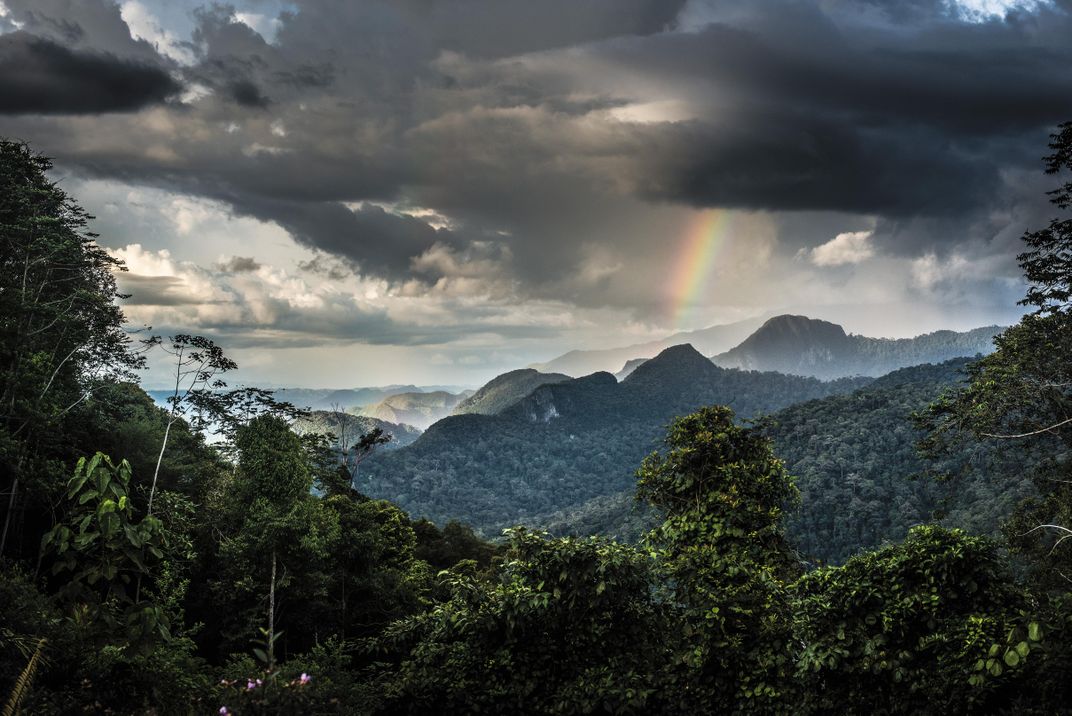
The nomadic Penan weren’t the only groups being threatened by Borneo’s deforestation. The Penan who lived in longhouses were also vulnerable. So were the other Orang Ulu, and the Dyak people on the southern, Indonesian side of the central ridge. Most of them lived and hunted in territories that weren’t officially recognized (and still aren’t today), and they were struggling to keep the chain saws and bulldozers out of their lands. Still, it was the nomadic Penan who captured Manser’s imagination. After seeing their game depleted, their rivers polluted and their tana, or customary hunting grounds, destroyed, he started helping them organize peaceful blockades against logging trucks. Rumors spread that the Malaysian authorities had put a bounty on his head. Manser was captured by police officers but escaped by leaping out of their vehicle and diving into a thundering cataract. Returning to Europe in 1990, he devoted the next ten years to rallying outside support for the Penan cause. For a while, the world took notice. In 1991, Al Gore, then a U.S. senator, condemned the logging activities in Sarawak, and in a speech at Kew Gardens, Prince Charles described the treatment of the Penan as part of a global “collective genocide.” Manser went on a 60-day hunger strike in front of the Federal Palace of Switzerland, in an attempt to inspire a ban on unsustainably harvested timber imports. Ultimately, though, none of those actions had much of an impact on Sarawak. In 2000, Manser slipped back over the Kalimantan border and headed for Bukit Batu Lawi, a 6,700-foot limestone pinnacle. He told the Penan who were helping carry his gear that he wanted to climb it alone and sent them back to their band. That was May 2000. Manser was never seen again. The machete slash marks he left behind were tracked to the swamp at the base of the pinnacle. In August 2014, on what would have been Manser’s 60th birthday, a new species of goblin spider was named in his honor: Aposphragisma brunomanseri. Vladimir Nabokov wrote that no form of immortality compares to a Latin species name. But given the way things are going in Borneo, how much longer will this goblin spider survive?
I’m reflecting on this at the end of my visit when Sagung asks for money to build a longhouse. I’m taken aback to learn that this group of nomadic Penan wants to move into a stationary dwelling. Sagung explains that he wants to establish a permanent presence on this land. It makes me wonder to what extent this camp has been a Potemkin village. During our visit, I’ve seen a stylishly dressed Chinese man, a representative of a timber firm, driving back and forth along the ridge. According to my guide, the company has already felled many of the trees in the Ba Marong territory, and it wants to pay them the equivalent of $30 apiece to come in and do a second cut. Sagung claims he isn’t going to give in, but more and more Penan groups are accepting offers like this.
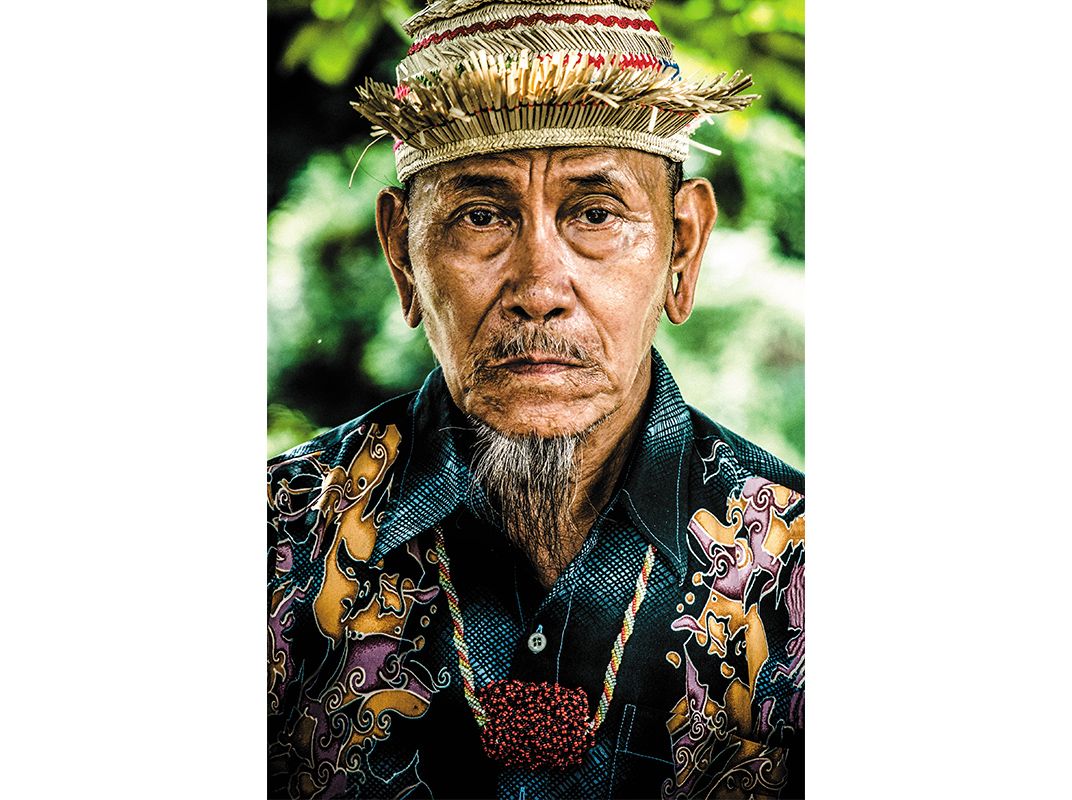
I suspect that the Ba Marongs’ wandering lifestyle is losing its appeal for other reasons, too. The members of this group move fluidly between the forest and their friends’ longhouses down the road. After they’ve experienced what life is like with electricity, television and running water, it’s not hard to understand why they might be hankering after a longhouse of their own. That doesn’t mean they won’t be gone for days at a time hunting babui and gathering sago palm, fruit and nuts in the forest. But there’s a reason so few Penans still live like the Ba Marong in raised pole huts. According to Mackenzie, that number has dropped from 300 to fewer than 50 during the past ten years. In another generation, that way of life will probably be gone.
**********
After we leave the Ba Marong camp, we spend three glorious days in Gunung Mulu National Park, a Unesco World Heritage site. In 1978, the Royal Geographical Society embarked on a 15-month inventory of the park’s flora and fauna, and researchers identified one of the largest collections of ants ever found in such a small area: 458 species. The lepidopterist J. D. Holloway was so blown away by what he found in the park that he undertook a monumental 18-volume series called Moths of Borneo. In Deer Cave, one of the largest subterranean chambers on earth, two million to three million free-tailed bats spend all day roosting from the ceiling. At dusk, they stream out of the cave in long floating ribbons, consuming as many as 30 tons of insects per night and pollinating numerous trees and flowering plants. Animals ranging from barking and sambar deer to the gargantuan Rajah Brooke’s birdwing papilio butterfly consume the salts in the bat excrement. Mulu, the British scientists discovered, was a naturalist’s paradise.
Brian Clark, Mulu’s park manager, has nothing but praise for Sarawak’s former chief minister. “Without Taib, we’d still be a backwater,” he tells me. “He’s developed the state and maintained peace between all the different tribes and races. Every country on earth has exploited its resources. The West can’t condemn any country for it. Canada, the U.S.A., Africa—where isn’t there deforestation? It’s part of the nature of the beast.”
I hear something different when I visit Long Mera’an, a community of several hundred people on the Mago River. The Penan who live here belong to the group Manser lived with between 1984 and 1990. At the time, they were nomadic, like the Ba Marong. They moved into a settlement in the 1990s, but their longhouse burned down, and then a logging company cleared their land to build an oil pipeline. The Mera’an had blockaded the pipeline three times. The fourth time, the state ministry in charge of pipeline routes negotiated a settlement of about $53,500. At least some of that money went to build new dwellings and buy electric guitars and big speakers for the new church.
The new community consists of several dozen free-standing houses built in a variety of styles, from shacks to a few well-built two-story structures with gardens and fences. Many residents own dirt bikes, which they use to cross the narrow suspension bridge across the Mago River.
At Long Mera’an, I meet Radu, a master sape player. Through a translator, he tells me he learned his melodies from the birds in the forest, messengers of the spirit Balei Pu’un. “The world was not created by Balei Pu’un,” says Radu. “It was already there. His job is to help people be good to each other. The way he communicates is through a bird or animal, because people cannot see him, so he needs a translator, a special person who is able to understand animals. My father was one of these people, and he taught me how to do it.”
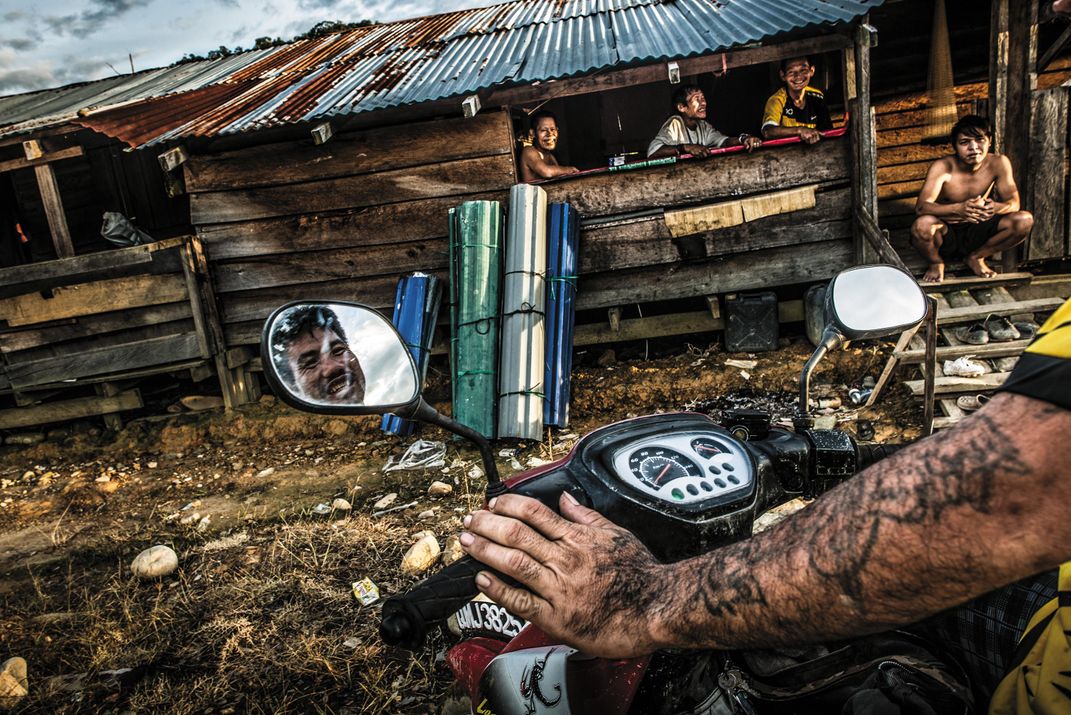
Is there a best time of day to hear Balei Pu’un speaking through the animals? “No time of day is better. If it happens, it happens.” Where will Balei Pu’un go if the forest is destroyed? “He will try to find another place where there is still forest.” What if there is no more forest anywhere? “We don’t know, but it could be the end of the world.” This is what the Penan believe. If their forest goes, it will be not only the end of them and the vast diversity of creatures who live there. The balei, the spirits who travel around the nine worlds of the Karawara, will also have nowhere to gather water and honey.
And what does this mean for the rest of us? Here in Borneo, I’ve been struck by the dramatic way people all over the world are shaping the fate of this island. The demand for tropical timber and palm oil is ending the Penans’ way of life and extirpating hundreds of species found only on this island. It’s also igniting peat fires that release more carbon dioxide than highways jammed with cars. If the deforestation continues at its current rate, there will be a cascade of negative impacts on everything from human health to the humid climate of Southeast Asia. The governments now promoting the logging and palm-oil industries will be crippled by the economic and ecological damage. And all of this will happen because of purchases made by consumers thousands of miles away. I, for one, am drastically cutting down on the number of palm-oil products I consume now that I’ve seen their hidden cost with my own eyes.
“We have to look after the whole thing,” Radu tells me. “If people want to have more and more, they have to understand that without molong there is nothing left.”
Related Reads
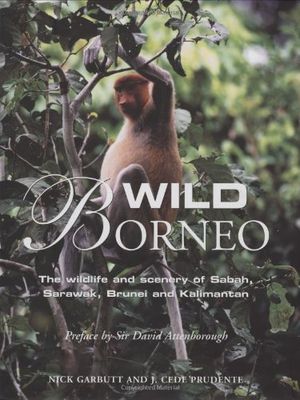
Wild Borneo

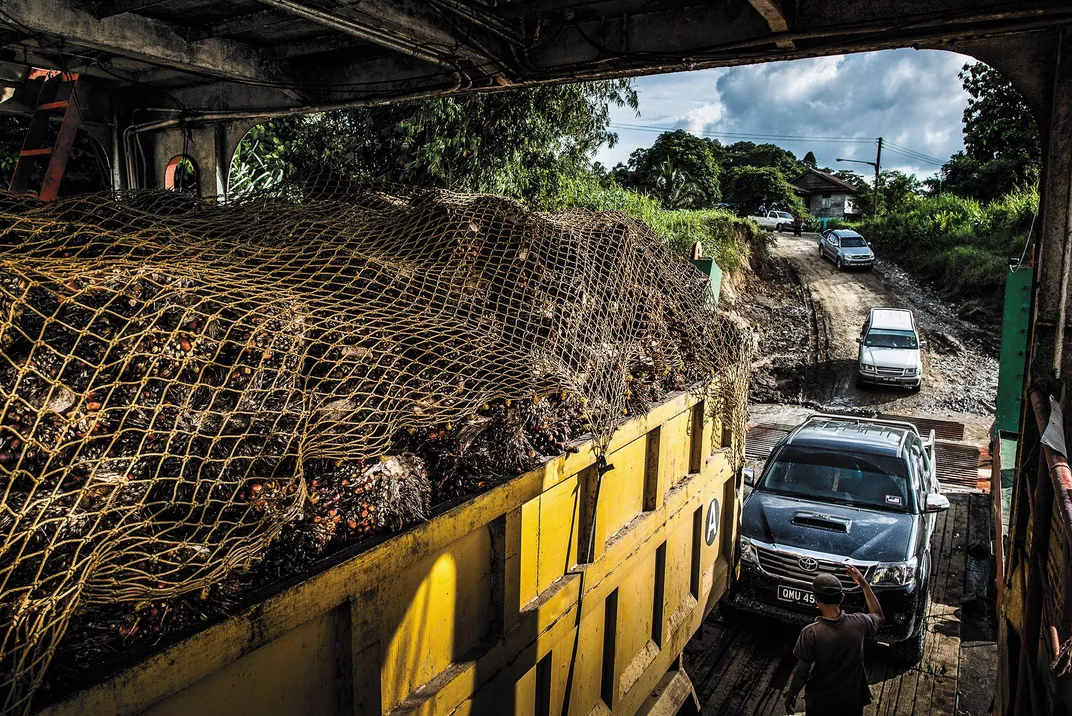
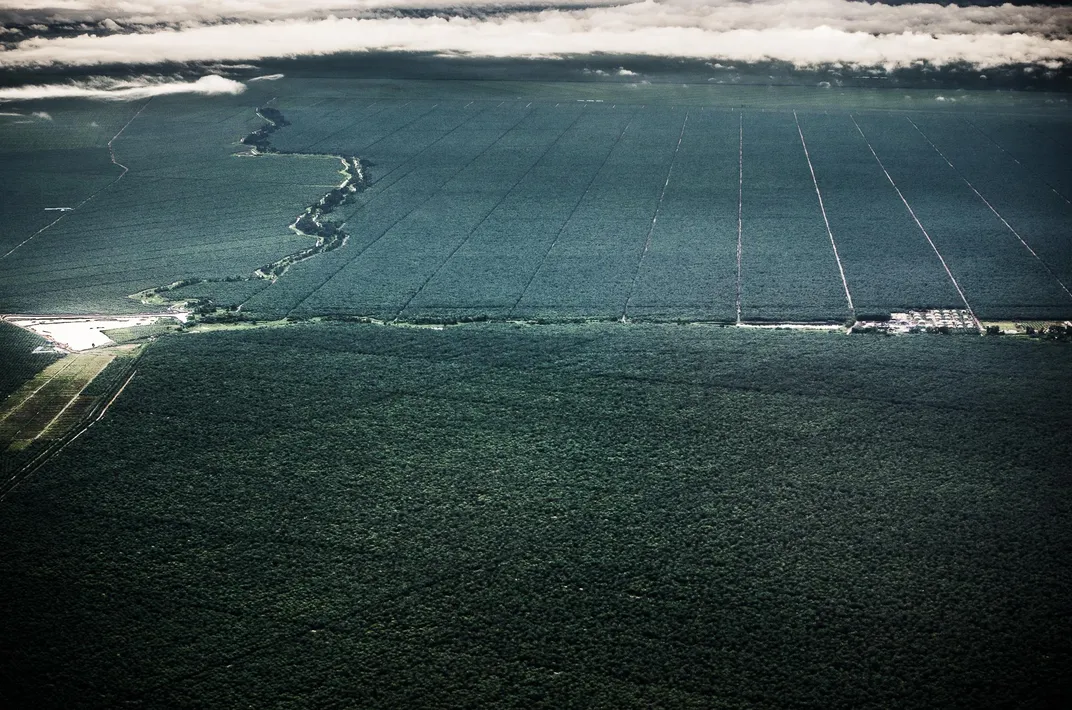

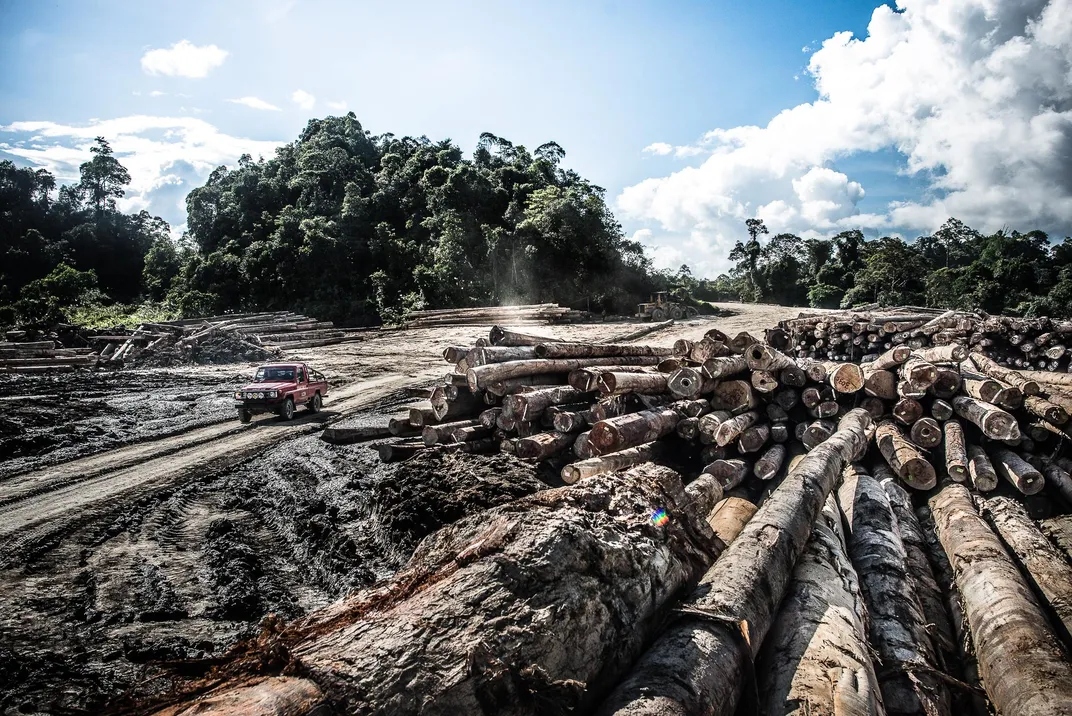
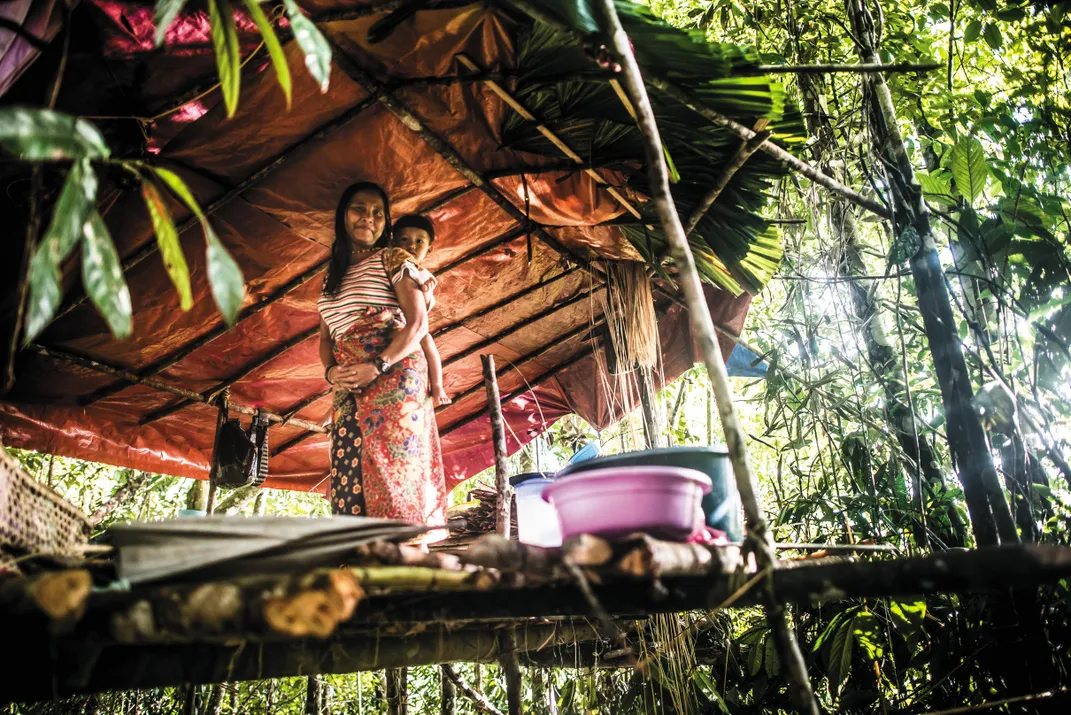


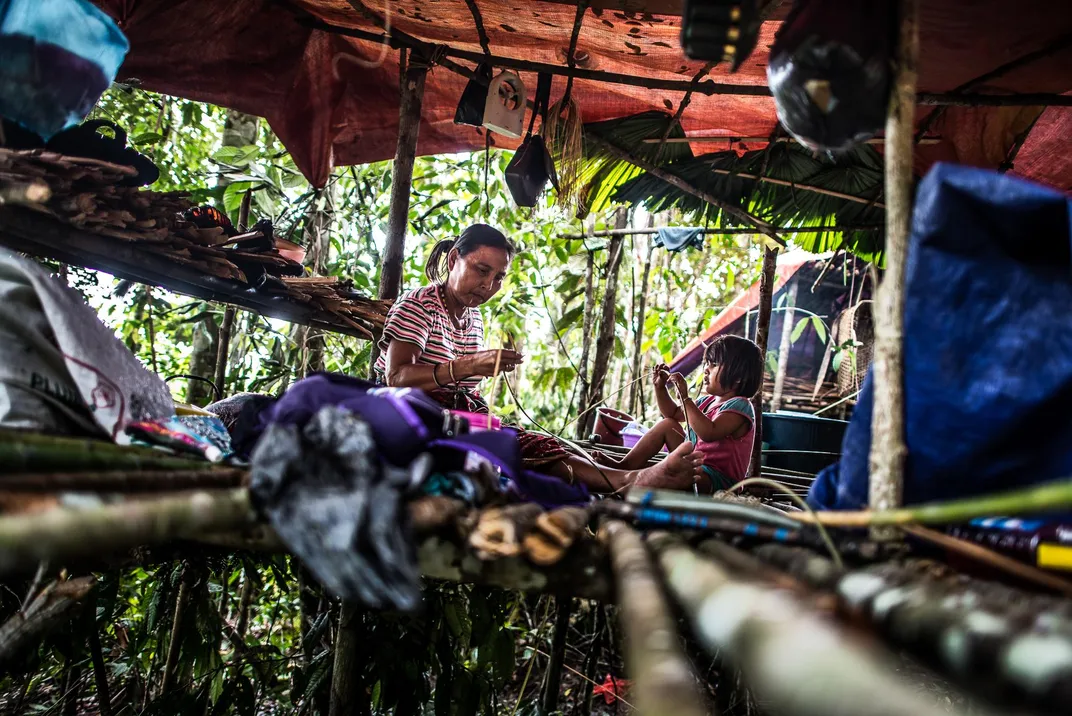
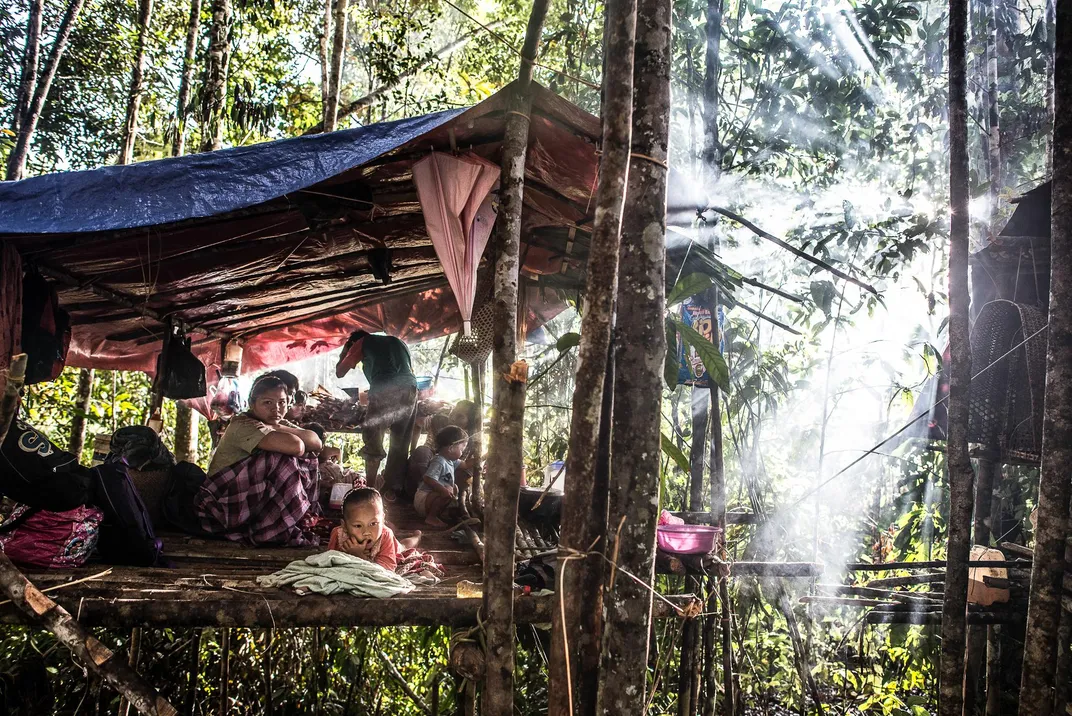
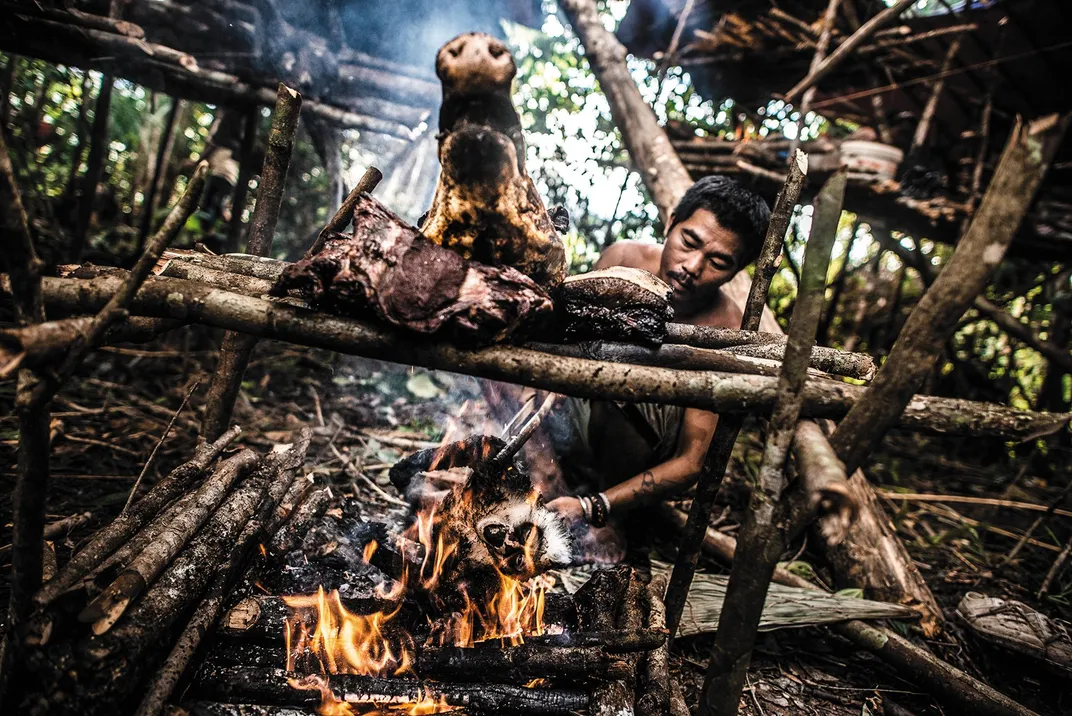
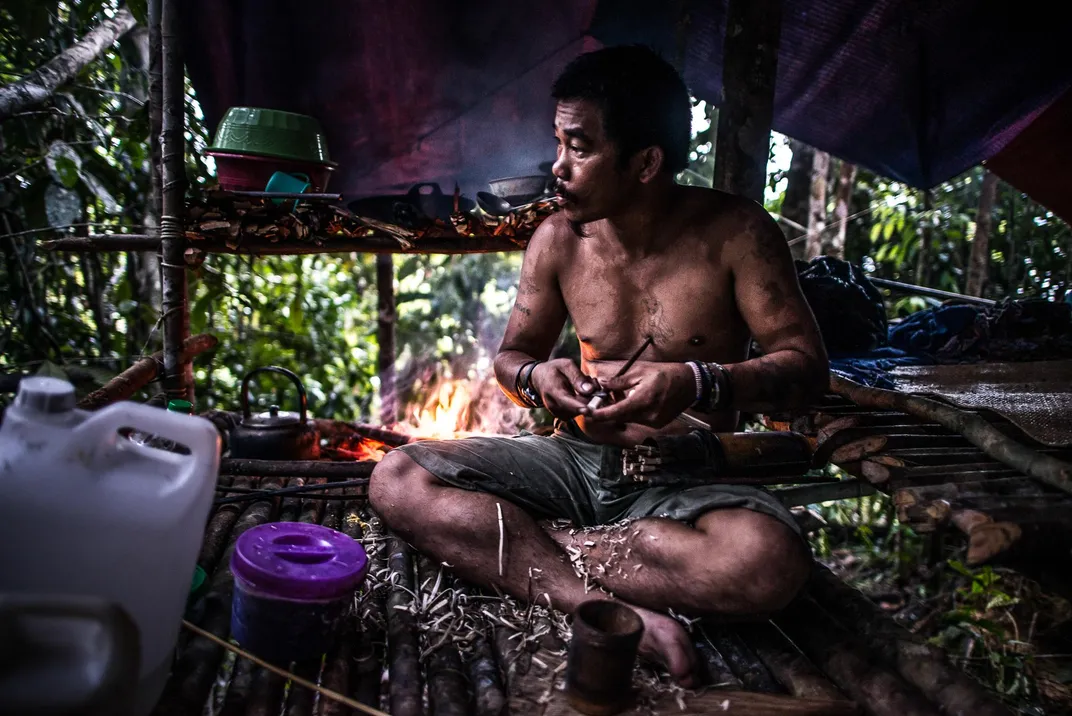
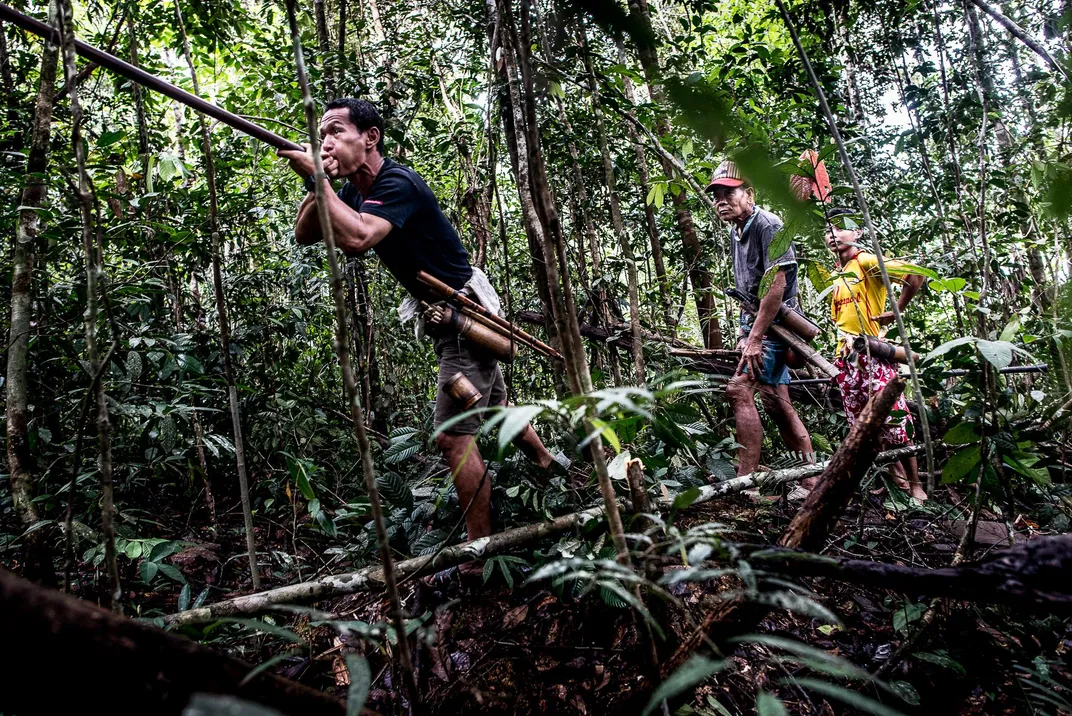
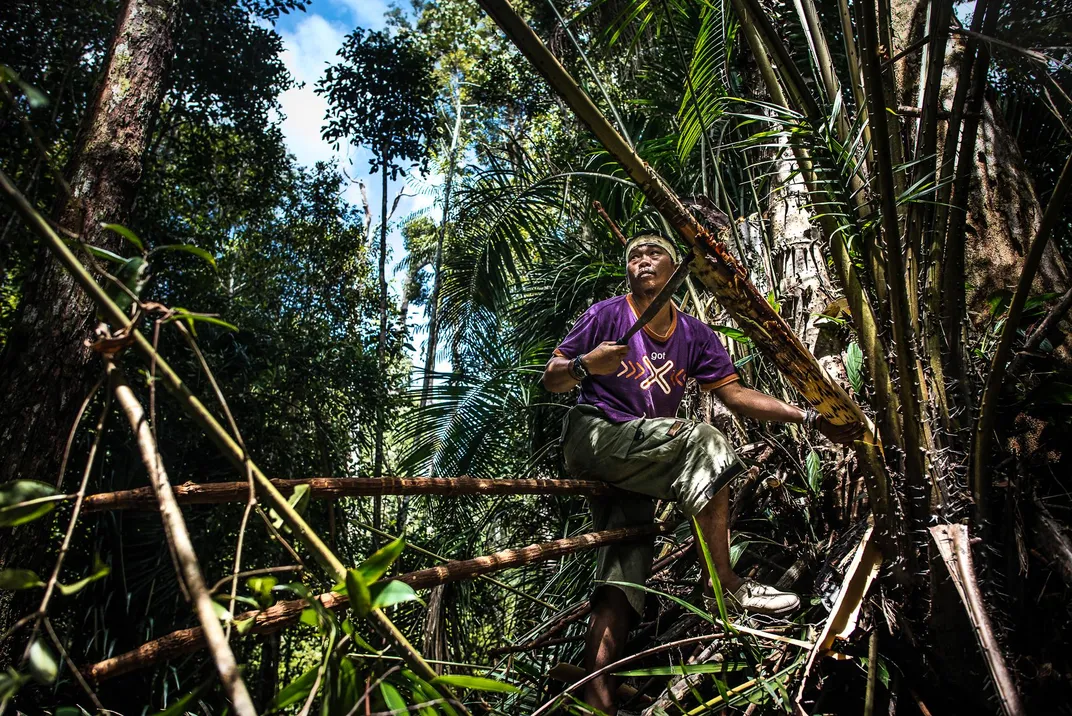
/https://tf-cmsv2-smithsonianmag-media.s3.amazonaws.com/accounts/headshot/Shoumatoff.jpg)
/https://tf-cmsv2-smithsonianmag-media.s3.amazonaws.com/accounts/headshot/Varial_headshot.jpeg)